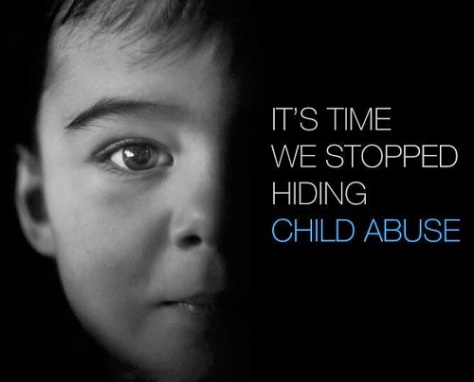
Understanding Child Maltreatment
Child maltreatment includes all types of abuse and neglect of a child under the age of 18 by a parent, caregiver, or another person in a custodial role (e.g., clergy, coach, teacher). There are four common types of abuse.
- Physical Abuse is the use of intentional physical force, such as hitting, kicking, shaking, burning or other show of force against a child.
- Sexual Abuse involves engaging a child in sexual acts. It includes fondling, rape, and exposing a child to other sexual activities.
- Emotional Abuse refers to behaviors that harm a child’s self-worth or emotional well-being. Examples include name calling, shaming, rejection, withholding love, and threatening.
- Neglect is the failure to meet a child’s basic needs. These needs include housing, food, clothing, education, and access to medical care.
Why is Child Maltreatment a public health problem?
The few cases of abuse or neglect we see in the news are only a small part of the problem. Many cases are not reported to police or social services. What we do know is that:
- 686,000 Children were found to be victims of maltreatment by child protective services in 2012.
- The total lifetime economic burden resulting from new cases of fatal and nonfatal child maltreatment in the United States is approximately $124 billion.
- It is estimated that less than 25% of the occurrences of Child Abuse are ever reported.
How does Child Maltreatment affect health?
Child maltreatment has a negative effect on health. Abused children often suffer physical injuries including cuts, bruises, burns, and broken bones. In addition, maltreatment causes stress that can disrupt early brain development. Extreme stress can harm the development of the nervous and immune systems. As a result, children who are abused or neglected are at higher risk for health problems as adults. These problems include alcoholism, depression, drug abuse, eating disorders, obesity, high-risk sexual behaviors, smoking, suicide, and certain chronic diseases.
Child Abuse
Child abuse and neglect occur when a parent, caretaker, or another person in a custodial role (e.g., clergy, coach, teacher) acts, or fails to act, in a manner that results in the death, serious physical or emotional harm, or sexual abuse or exploitation of a Child; or that presents an imminent risk of serious harm to a Child.
- A report of Child Abuse is made every 10 seconds.
- There are about 3,300,000 reports of Child Abuse annually.
- For every report, at the very least 3 more go unreported = about 13,200,000 annually.
- More than 7 Children die each day because of Child Abuse, and if all states would meet the standards already in place, the number would be at least 10 and possibly 13 or higher.
- Approximately 70 percent of Children that die from abuse are under the age of 4.
- The estimated annual cost of Child Abuse and neglect in the United States for 2008 is $124 billion.
Child Sexual Abuse
- Child rape occurs every two minutes.
- 1 in 3 girls will be sexually molested before the age 17.
- 1 in 5 boys will be sexually molested before the age 17.
- A sex offender will molest an average of 120 victims.
- 90% of molesters abuse children they know
- In 8 out of 10 rape cases, the victim knows the attacker.
- Nearly 6 out of 10 sexual assaults occur in the victim’s home or the home of a friend, relative or neighbor.
- Less than 25 % of victims report their sexual assault to the police.
- Only about 2 percent of all sexual assaults reported to police are unsubstantiated.
Child Trafficking
Child trafficking victims, whether for labor, sex or organ trafficking, come from all backgrounds, include both boys and girls. They span a wide age range from 1 to 18 years old.
- Up to 300,000 Americans under 18 are lured into the commercial sex trade every year.
- The average victims age is 11 to 14.
- Do you know that in 2014, 1 out of every 6 runaways, or 16.67%, fell into the hands of Traffickers?
- In 2015 that number rose to 1 out of every 5 runaways, or 20%, fell into the hands of Traffickers.
- The average life expectancy of a Child that has been Trafficked is 3 to 7 years. They are found dead from attack, abuse, HIV/AIDS and other STD’s, malnutrition, overdose or suicide.
More Statistics
- 10,000,000 Children and young people ages 13 to 24 will contract one (1) or more STI or STD this year alone.
- I have yet to find a compiled list and number of Children ages 0 to 12 that will be born with, or contract one (1) or more STI or STD.
- 2,000,000 Runaways yearly.
- According to the National Runaway Switchboard 1.3 million runaway and homeless youth live on America’s streets every day.
- 85% of Runaways are fleeing some form of abuse.
- In 2014, 1 out of every 6 runaways, or 16.67%, fell into the hands of Traffickers.
- In 2015 that number rose to 1 out of every 5 runaways, or 20%, fell into the hands of Traffickers.
Bibliography:
- Department of Justice, National Criminal Justice Reference Service, Office of Justice Programs
- Centers for Disease Control and Prevention
- The National Center for Missing & Exploited Children
- Journal of Preventive Medicine
- Ark of Hope for Children

It’s going to take everybody who believes as we do to bring about a change in this country and the whole world.
LikeLiked by 1 person
Great to see the statistics bundled together. Thank you!
LikeLiked by 2 people
I’m about to do a post about your post that Aida shared, you might want to check it out.
LikeLike
I have one thing to say to everyone that reads this:
INDIFFERENCE WILL NEVER STOP CHILD ABUSE, NOR CHILD SEXUAL SLAVERY….
LikeLike